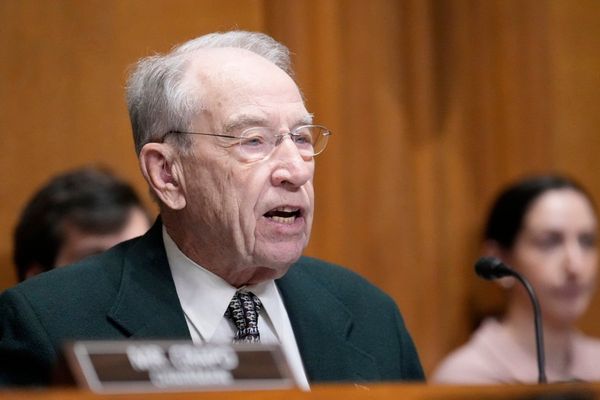
Most people can foggily recall where they were as the clock struck midnight on 1 January 2000. Me? I hugged the jaundiced rim of a village hall toilet, vomiting 10 shades of bile. I had attempted to complete Team 2000 – a challenge set by 20 friends who endeavoured to consume 2,000 units of alcohol, 100 units each, throughout December.
Seasoned soaks might consider this eminently achievable – especially around the festive season – but I was just 15 years old. Later that night, in the grim depths of morning, I defecated while unconscious in my friend’s sleeping bag. Welcome to generation peak booze.
“Peak booze” was a moniker bequeathed to 2004 and popularised in a 2015 article by the writer Chrissie Giles. The UK’s drinking rates that year reached the highest point for a century: 9.5 litres of pure alcohol, the equivalent of circa 100 bottles of wine, per person per year. (In 1950, the figure was just 3.9 litres.)
I was at university by then, merrily tanking the booze that had been etched into the fabric of every social event since my teens. Fast forward to last week , and statistics revealed that UK alcohol-specific deaths passed 10,000 in a year (in 2022) for the first time. That was a rise of 32.8% compared with 2019, and most media coverage focused on Covid’s influence. But what about peak booze? How did we reach this lodestar of excess – and how much blame should it carry for these often untimely deaths?
If 2004 was the pinnacle of peak booze, we can broadly describe its epoch as the mid-to-late noughties. Writer James Butler recently called this period an era of “ironic, nihilist, hypersadist mass culture” and, looking back, it’s possible to empathise. We certainly drank – often alongside taking cocaine, the use of which roughly tripled in this decade compared with 1995 – with a devil-may-care attitude that permeated the cultural totems of the time.
The most obvious of these is the Libertines – the generational, fashion-defining punk poets who straddled culture and class. Their everyperson appeal was sealed by their zeal for alcohol (and manifold illegal drugs). Never did being wasted seem so aspirational or romanticised – but also normal. This attitude permeated a multi-genre – if not massively multi-ethnic – music scene for which booze was best: acts such as the Strokes, the Streets, Klaxons, LCD Soundsystem, Bloc Party, CSS, Hard-Fi and Amy Winehouse – whose vulnerabilities were shamelessly mined by the tabloids until her tragic death from alcohol intoxication in 2011. And it wasn’t just music: TV shows such as Skins and Shameless, the latter with its infamously sozzled but lovable protagonist Frank Gallagher, lauded booze and excess in their own ways.
The devil, as ever, is in the details. This was a decade that metaphorically began with 9/11 – sending collective societal-paranoia levels spiralling – and New Labour being re-elected to power with a pledge that it “will not introduce [university] top-up fees and has legislated against them”. They had reneged on this by 2004 – a year after embarking on an Iraq war justified by the infamous “dodgy dossier”. The party atrophied, and in 2008 global recession began in the wake of the Lehman Brothers investment bank collapse, hitting job prospects and ensuring those top-up fees would take even longer to pay off. It’s perhaps no wonder people, particularly young people, would seek escapism.
In 2008’s Swimming with Crocodiles: The Culture of Extreme Drinking, criminologist and drug culture researcher Fiona Measham suggests: “Young people growing up in contemporary late modern capitalist society [seek to] balance a broader sense of lack of control with the re-exertion of control through the ‘controlled loss of control’ in leisure” as a means of negotiating the pressures of everyday life.
Measham also discusses how the night-time economy became a driver of civic revival. This was manna for those who loved a pint or eight, but also nurtured a “widening array of licensed leisure venues that made drinking the primary purpose rather than the backdrop to the creation of social spaces”. This culture of intoxication was helped by the famed Licensing Act 2003, which relaxed licensing hours in an effort to inspire a supposed “Mediterranean-style” alcohol culture. While relatively few venues applied for the 24-hour licences on offer when the new laws were enforced in November 2005, by 1 April 2006 more than 50,000 venues were granted longer hours.
This was all happening in the wake of the 1990s and Britpop’s deification of “cigarettes and alcohol” plus rave culture – which was supercharged by the drug ecstasy. A joy-inducing stimulant that doesn’t lend itself to knocking back Stella Artois, the drug was demonised by the media in the wake of Leah Betts’s 1995 death and, say Measham and fellow researcher Kevin Brain, led to brewers developing alcopops and later other quaffable boozy drinks containing ingredients such as guarana and caffeine as a more appealing, gender-spanning psychoactive alternative.
The rise of wine also had a huge impact on female drinking, importing cultural shifts that carry us through peak booze to the present crisis.
“You can see a rise in women’s drinking that perfectly mirrors overall wine consumption,” says Colin Angus, a senior research fellow at Sheffield University with a speciality in alcohol policy modelling. “It also places a move away from drinking in pubs – 30 years ago more than two-thirds of alcohol was drunk in pubs. Before the pandemic, more than two-thirds was drunk at home.” (Angus later tells me that 2022’s statistics peg this figure at 73%.)
Research has found that home drinkers over-pour wine and spirits. Ian Hamilton, associate professor of addiction at York University, thinks the pandemic has made the solo home drink far more socially acceptable: “Some of the shame has been lost around the idea of the solitary drinker,” he says.
Testament to this is Emma, 38, who last year underwent a successful liver transplant following a diagnosis of stage 4 liver disease. Emma is a patient advocate for the British Liver Trust and says: “I was a sociable person, a social drinker.”’
Her booze journey started with alcopops when she was around 17, moved through the cheap-cider gears at university, then careered head first into the vine. “I just drank wine from my 20s. Always wine. It escalated when I moved to London – the after-work drinking culture was very much there.” She describes networking breakfasts with prosecco and orange juice, weekends away and fun-sounding boozy brunches with the girls. Also, she says, “the media definitely played a part – there was that programme Ladette to Lady. But I’d also grown up with the Spice Girls and girl power. Drinking was about independence – not only can we join the men, but we could do it better.” It was during lockdown that things started to unravel and she was drinking three bottles a day at home, alone.
Emma’s story, while one with a positive conclusion, is sadly not unique. The biggest escalation in alcohol-specific deaths – mostly from liver disease – since the pandemic has been among women aged 50-54. There has been a 48% jump, from 17.8 people per 100,000 to 26.3. These numbers, however, are still dwarfed by men’s deaths, which are roughly double those of women – the majority in those over 50.
Talk with anyone involved in alcohol policy and it’s clear that drinking habits are fiendish to predict and deconstruct: for instance, newly released World Health Organization statistics that found British children to be the biggest worldwide alcohol users flew in the face of the prevailing narrative of young people embracing sobriety. But as with most things, increasing deaths have roots in a constellation of socioeconomic inequalities, a dearth of services and/or adequate healthcare, plus poor public messaging that may or may not be related to the financial muscle of Big Alcohol. But what about peak booze?
“These things rely on a core group that consumes the lion’s share of alcohol,” says Hamilton. “It’s not usually the people having an odd pint or glass of wine. But [the current numbers] demonstrate the time lag between drinking too much and paying with your life.”







